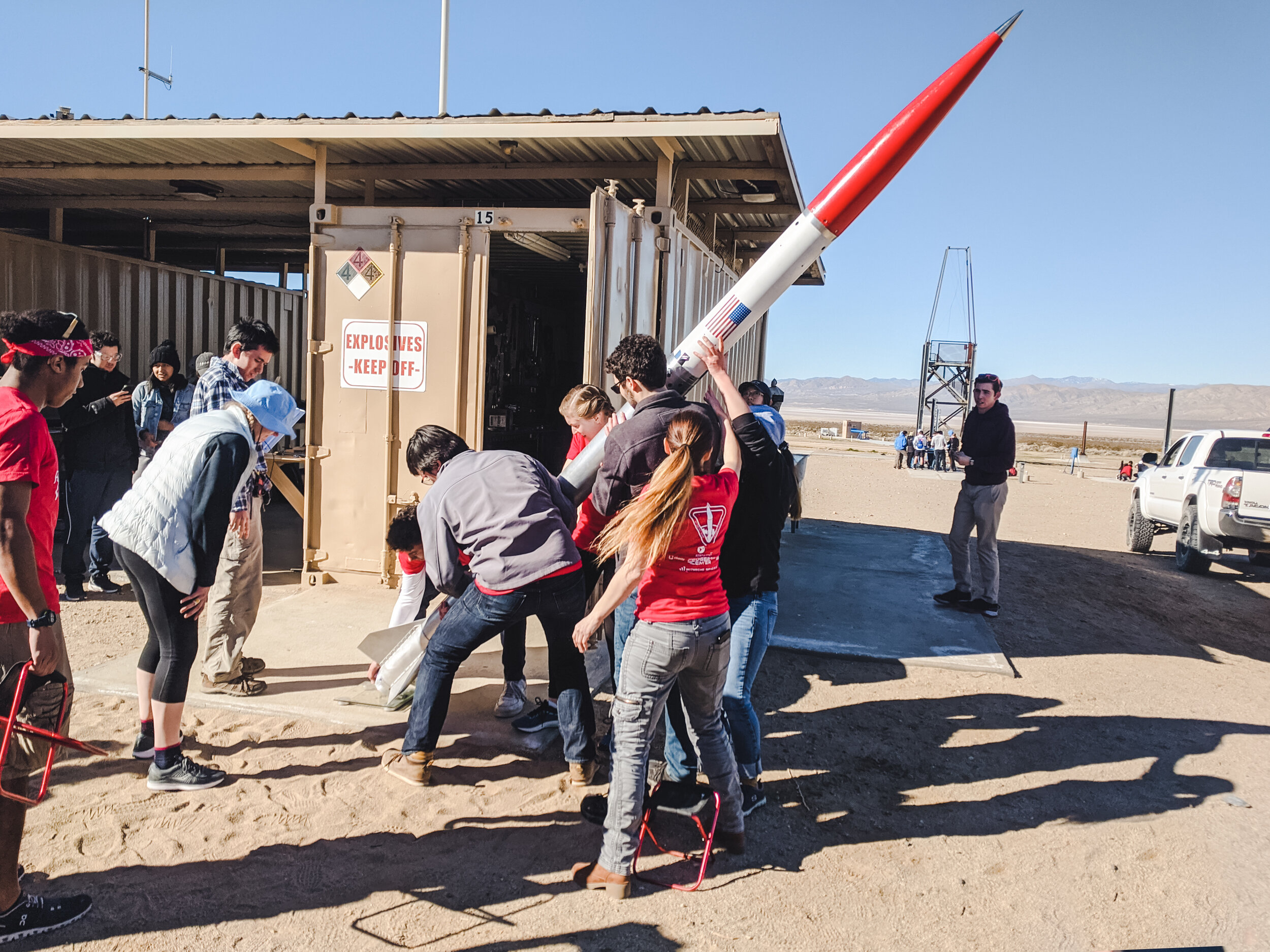Projects
Aurora
Aurora will be Rocket Team’s submission for the 2025 Spaceport America Competition 30K SRAD category. Currently being designed!
Polaris
Polaris will be our first launchable liquid engine! It is a blow-down ethanol and nitrous oxide engine designed for simplicity and iteration speed.
Prometheus
Prometheus is Rocket Team’s submission for the 2024 Spaceport America Competition 30K SRAD category. It’s a two-stage 6.17” OD rocket using drag separation. Prometheus was tested in the spring of 2024.
Helios
Helios uses ethanol and LOX and is pressure fed with gaseous nitrogen. It is designed to produce 360 lbf of thrust in 5 seconds. The injector uses 8 unlike impinging jets and the igniter is an Estes motor attached into the side of the chamber. The chamber and nozzle are made of 1018C steel and are heat sink cooled. Helios was hot fired in May of 2024.
Medusa
Medusa was discontinued due to scheduling and safety concerns. Medusa was designed as a two-stage rocket with active separation and a 6”-4” configuration. The intended altitude for Medusa was 180,000 ft. Significant changes were made to the deployment mechanisms, av bay and propellant seen on Phoenix. Separately, the development of the 6” P-motor and carbon fiber fin cans will be continued and tested.
Phoenix
A full launch of Phoenix, a project designed and manufactured entirely during COVID times, was finally conducted over IAP 2023. Built with larger and stronger fins than its predecessor Staging Demo II, as well as new custom-made motors and propellant, Phoenix reached an altitude of 32,000 ft, setting a new team altitude record. During the flight, both the booster motor and sustainer motor ignited successfully, stage separation and stage ignitions were both nominal and the sustainer and booster were both fully recovered (despite a parachute deployment failure on the booster). Flight data as well as onboard footage from both stages were recovered. The aluminum fins and fin case were found almost fully intact despite a hard impact with the ground for the booster.
Staging Demonstrator II
A great improvement, the second flight of staging demonstrator successfully reached 33,000 feet. The fins were increased in size and the center of gravity was tracked more carefully to ensure a stable flight. Additionally, both stage separation and sustainer ignition were nominal. Unfortunately, the sustainer came down without parachutes deployed, burying itself into the ground. The piston did not fire, likely due to an avionics error or faulty wiring. The booster was recovered successfully. Data from all onboard altimeters on both stages were also recovered.
Hermes III
For Hermes III, the team focused on improving engineering design practices while cutting the project timeline in half. Hermes III was lighter, stronger, and more reliable than its ancestors. After a round of engineering change requests, the team improved its drawing standards, implemented more rigorous testing and specifications, and improved its simulation capabilities. Hermes III was built and tested in only one semester. The rocket was launched in early February 2020 but did not reach its target altitude. The fins failed at 8,000 feet while going Mach 3.2. The majority of the rocket was recovered, and the team’s capabilities had developed significantly throughout the project.
Staging Demonstrator
The goal of staging demonstrator was to successfully drag separate a two-stage rocket. The nozzle of the second stage, or sustainer, sits on top of the staging cone at the top of the first stage, or booster, with no additional retention, allowing drag to separate the two stages after the booster motor burns out. A head-end ignition system was developed to ignite the second stage motor using an electronic match fired by the avionics in flight. The booster has a single separation, single deploy recovery system that deploys a main parachute at apogee. In order to decrease drift, the sustainer has a single separation, dual deploy recovery system that deploys a drogue parachute at apogee and a main parachute at a specified altitude. Both stages use a piston with black powder to separate at high altitudes. The staging demonstrator project was designed and built by a small R&D group of 6 team members. The first flight successfully demonstrated drag separation and second stage ignition but was unstable, causing the sustainer to deploy parachutes while going sideways at a high velocity.
Hermes II
Building off the success of Hermes I, the team’s next goal was to launch to a target altitude of 80,000 feet, closing the gap to space. Hermes II was built over one academic year with the overarching goals of the Hermes project in mind: to learn how to build space capable rockets by continuously improving on our engineering techniques. The motor driving Hermes II was larger than the previous iteration of the rocket and more effort was put into the fabrication of lighter components. Hermes II encountered an anomaly approximately 7 seconds after launch and did not make it to its target apogee due to a structural failure of the custom built composite fins.
Hermes I
The purpose of Project Hermes was to incrementally increase both the altitude of the rockets and the team’s technical capabilities with the goal of eventually reaching space. Hermes I was the first attempt to build a large custom solid propellant motor and design a lighter, more efficient vehicle. A new high-altitude recovery system was developed, including a piston-actuated separation mechanism and a hand-sewn disc-gap-band drogue parachute. Hermes I successfully launched to 32,000 feet and was recovered nominally.
Raziel
Project Raziel was the team’s entry to the 2017 Spaceport America Cup 10K COTS category and the flagship project during 2016-2017. The goal was to manufacture all parts in-house. Raziel featured custom-built S-glass tubes, carbon fiber fins in an aluminum weldment, an XRF sensor & rover payload, our in-house flight computer, Pyxida, and dual-deploy recovery with student-sewn ellipsoidal main and drogue parachutes. After supporting the team’s first custom solid propellant campaign, the team ultimately flew on a CTI M2505 motor. Raziel successfully launched to 10,204 feet and achieved 2nd place out of 46.
Virgo
Project Virgo was the team’s entry to the 2017 Spaceport America Cup 30k COTS category as a development project. Virgo leveraged COTS parts to be built & flown in one semester. Virgo featured a custom fly-away rail guide, a carbon fiber airframe, dual-deploy recovery, and a custom fly-away rail guide. Virgo successfully launched to an estimated 31,850 feet.













